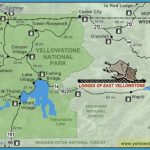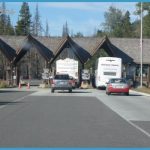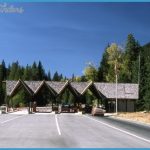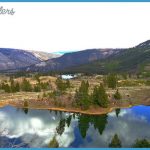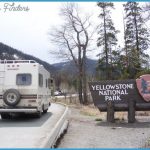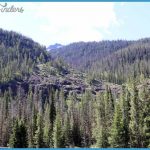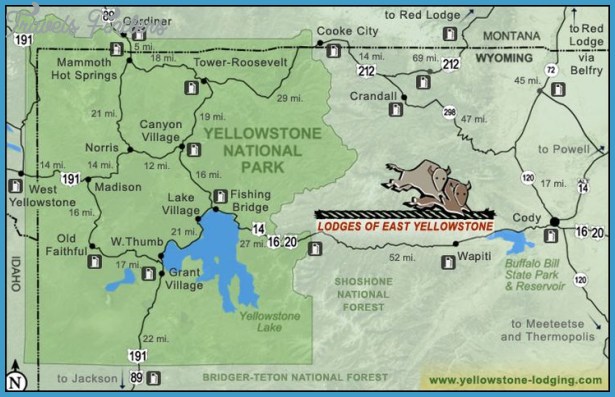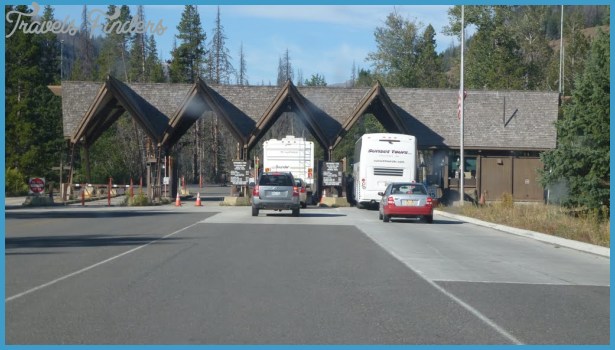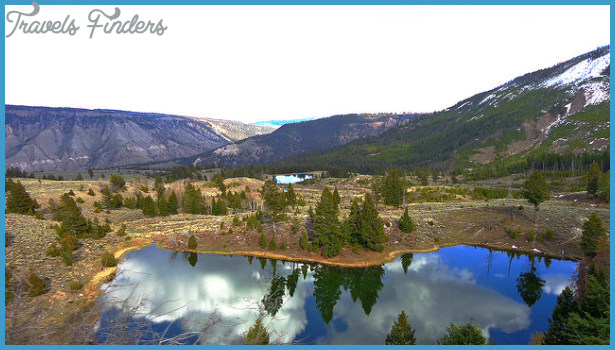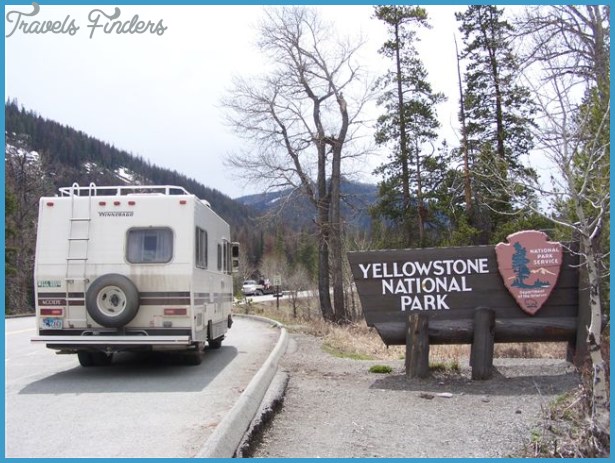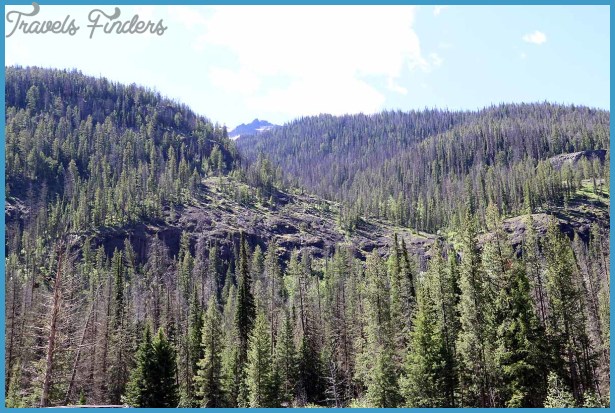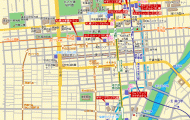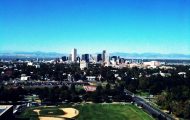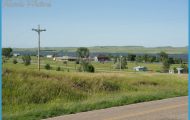Among the Wyoming gateway communities, the growing town of Cody is rivaled only by Jackson for its complete range of tourist attractions and facilities. Cody has the advantage of having considerably lower-priced accommodations than does Jackson. William Frederick Cody, who, with George Beck, founded the town in 1896, was world famous as Buffalo Bill, a name he won as a young man by killing more than 4000 buffaloes in a few months’ time. His prowess as a hunter and Indian scout was exceeded only by his fame as a showman. From 1883 well into the 20th century, he toured the United States and Europe extensively with his Wild West spectacle. He made a fortune but lost almost all of it in well meant, but mostly unsuccessful, speculative ventures. The town of Cody was the terminus of the Burlington Route, a railroad that operated into Cody from 1901 to 1956. Cody still has some historic buildings, including the 1902 Irma Hotel, named for Buffalo Bill’s daughter.
The Buffalo Bill Historical Center houses five fine museums. For one admission price, you can visit the Whitney Gallery of Western Art, the Buffalo Bill Museum, the Plains Indians Museum, the Cody Firearms Museum, and the Draper Museum of Natural History, whose interactive exhibits center around the Greater Yellowstone Ecosystem. Worth a stop is the Old Trail Town just west of town on the highway to Yellowstone. It’s a collection of historic western buildings, including one used by Butch Cassidy and the Wild Bunch. Other attractions include a nightly rodeo during summer months and, on two weekends in June, the Plains Indian Powwow, a social gathering that includes competitive dancing. There are two annual events in July: the Cody Stampede and the Yellowstone Jazz Festival. The Stampede is two days of whooping it up, with parades, rodeos, barbecues, and Western entertainment. The area along the Shoshone River here was called Colter’s Hell by 19th century trappers. Native Americans and trappers used the Shoshone River Canyon and Sylvan Pass as an east-west passage through the high Absaroka Range. Probably the first white person to use this pass and the first to see Yellowstone’s marvels was mountain man John Colter.
Colter reported information about his 1806-8 traverse of the area to Capt. William Clark of the Lewis and Clark Expedition, who recorded it on a map. John Colter may have seen at least some of the hot spring basins and must have told people about them, but they did not believe him. A large tar spring that gave off sulfurous odors near the junction of the North and South forks of the Shoshone River came to be called Colter’s Hell, and the river was called the Stinkingwater River throughout the 19 th century. In 1835, Colter’s Hell showed up in Washington Irving’s version of an early explorer’s journal, The Adventures ofCaptain Bonneville. Somehow the name had become transposed to the whole of the Yellowstone thermal area as a derisive term, with the implication that Colter had not seen the wonders he had described. The dual confusion over Colter’s veracity and exactly where Colter’s Hell was located persisted until about 50 years ago, when historian Merrill J. Mattes determined that the name referred to hot springs in the Shoshone River Canyon and not to Yellowstone Park. The Wyoming Legislature changed the name Stinkingwater River to Shoshone River in 1901, when Cody was first being settled and the road into Yellowstone was being improved. You enter the Shoshone Canyon and cross the river almost simultaneously, with Rattlesnake Mountain on the north and Spirit Mountain (also called Cedar Mountain) on the south. This whole area was important to the Crow tribe. Young Crow vision questers, seeking to become tribal leaders and medicine men, visited the land that is now under Buffalo Bill Reservoir.
Automobile use of the Shoshone Canyon road began in 1915. Here’s what it looked like to the author’s grandfather, Montana mountaineer Fred Inabnit, as he drove up the old road in 1918: The Shoshone canyon is so narrow and winding that you can hardly see from the bench [rim of the canyon] where the valley cut through. You follow the river closely here as there is no other way possible, at times several hundred feet above it and then dipping down almost into the water. The roads are rocky, some places on and through solid rock and up and down steep hills . The canyon is a beautiful sight, both its sides reaching up to near timber line, either perpendicular or steep. We could see the dam something over a mile away and before reaching it the road climbs way up above the river only to take another dip so as to make a good long steep climb to reach the level of the dam again . The road was reconstructed after World War II, so that traveling through it has become much less of an adventure. In fact, on the modern road you’ll hardly notice the more than 3500-foot (1080 m) climb from Cody to Sylvan Pass inside the park, a distance of 60 miles (96 km). Seven miles (11 km) from Cody and immediately beyond the long third tunnel is 353-foot-high (108 m) Buffalo Bill Dam, the tallest dam in the world when completed in 1910. Looking down from the dam is rather like peering from the top of a 35-story building, with the added thrill of roaring water below creating a tremendous spray. You may want to pick up a pamphlet about the facilities available in Buffalo Bill State Park either at the visitor center or at the park’s headquarters about 3 miles (5 km) up the road to the west.
The road passes along the northern edge of Buffalo Bill Reservoir, crosses the Shoshone River, and then passes the little town of Wapiti. Soon after the sign about the local geology, you’ll enter an area covered by what geologists call the Absaroka Volcanics. Around 50 million years ago, about a dozen major volcanic centers spread lava and volcanic debris over a huge area from beyond the northwest corner to well southeast of Yellowstone Park (see the map of the Absaroka Range Volcanics, p. 157). Look at relatively low Jim Mountain to the north, where you can see the edges of the old volcanic lava flow layers. In the distance beyond Jim Mountain, you may catch a glimpse of high Dead Indian Peak, another of many mountains made of lava. West of Wapiti, you’ll be entering America’s first national forest, the Shoshone National Forest, created in 1891 and called at that time the Yellowstone Timber Land Reserve. It was set aside to be a cushion of protection east and south of Yellowstone.
As you drive west, you’ll begin to see the fantastic rock formations or hoodoos this road is famous for. About a mile (1.6 km) into the national forest, on the left (south), is the first of many named hoodoos, Laughing Pig Rock. On the north side and almost perpendicular to the road is the Chinese Wall, actually a dike, that is, a thin sheet of rock formed when magma squeezed into a vertical crack in the already existing sediments. In 4 to 5 miles (6-8 km), you’ll see Hanging Rock, which does indeed hang almost over the road. Less than 1 mile (1.5 km) from this is Goose Rock at right center on the cliff top. In the same turnout area is the Holy City. Many equally fantastic shapes may inspire you to name them yourself.

